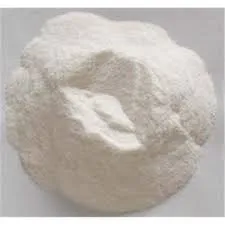
10월 . 13, 2024 21:48 Back to list
hydroxypropyl methylcellulose uses in tablets
Hydroxypropyl Methylcellulose Uses in Tablets
Hydroxypropyl methylcellulose (HPMC), a semi-synthetic polymer derived from cellulose, is widely used in the pharmaceutical industry, particularly in the formulation of tablets. This versatile compound is known for its exceptional film-forming, thickening, and stabilizing properties, making it an ideal ingredient in various dosage forms. With the increasing demand for effective and efficient drug delivery systems, the role of HPMC in tablet formulations has become increasingly significant.
Hydroxypropyl Methylcellulose Uses in Tablets
In addition to its binding properties, HPMC serves as a controlled-release agent in tablet formulations. The polymer’s unique solubility characteristics allow for the modulation of drug release profiles. This feature is particularly beneficial for drugs that require a sustained release over an extended period. By controlling the rate at which the drug is released into the gastrointestinal tract, HPMC can enhance therapeutic efficacy and improve patient compliance. Controlled-release tablets reduce the frequency of dosing, which is particularly advantageous for chronic conditions that require long-term medication.
hydroxypropyl methylcellulose uses in tablets

Moreover, HPMC enhances the stability of tablets, especially in terms of moisture sensitivity. Many active pharmaceutical ingredients (APIs) are hygroscopic, meaning they can absorb moisture from the environment, which can lead to degradation. HPMC acts as a moisture barrier, helping to protect these sensitive compounds from environmental factors. This stability not only extends the shelf life of the tablets but also ensures that patients receive the full therapeutic value of the medication.
Another notable application of HPMC in tablets is its role as a coating agent. The film-forming properties of HPMC allow it to be used in the coating of tablets, which provides several advantages. Coating can mask the taste of bitter drugs, make the tablets easier to swallow, and protect sensitive ingredients from light and air. Additionally, HPMC coatings can also allow for controlled release, offering an additional layer of customization in tablet design.
While HPMC is primarily known for its applications in traditional tablet formulations, its versatility extends to other areas, including granulation processes and as a suspending agent in liquid formulations. This adaptability makes HPMC a valuable excipient in developing a broad range of pharmaceutical products.
In conclusion, hydroxypropyl methylcellulose is an essential ingredient in the formulation of tablets due to its binding, controlled-release, and stabilizing properties. Its ability to enhance the physical characteristics of tablets and improve the stability of active ingredients makes it a preferred choice among formulators. As the pharmaceutical industry continues to evolve, the role of HPMC in developing innovative drug delivery systems will undoubtedly expand, ensuring that patients receive the highest quality medications tailored to their needs.
-
The Widespread Application of Redispersible Powder in Construction and Building Materials
NewsMay.16,2025
-
The Widespread Application of Hpmc in the Detergent Industry
NewsMay.16,2025
-
The Main Applications of Hydroxyethyl Cellulose in Paints and Coatings
NewsMay.16,2025
-
Mortar Bonding Agent: the Key to Enhancing the Adhesion Between New and Old Mortar Layers and Between Mortar and Different Substrates
NewsMay.16,2025
-
HPMC: Application as a thickener and excipient
NewsMay.16,2025
-
Hec Cellulose Cellulose: Multi functional dispersants and high-efficiency thickeners
NewsMay.16,2025







